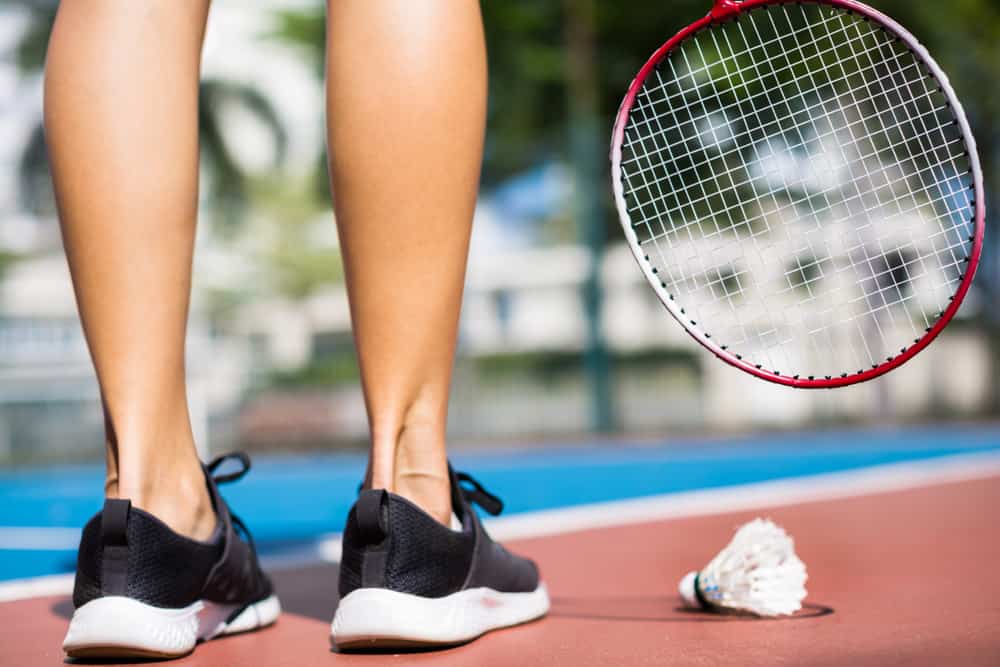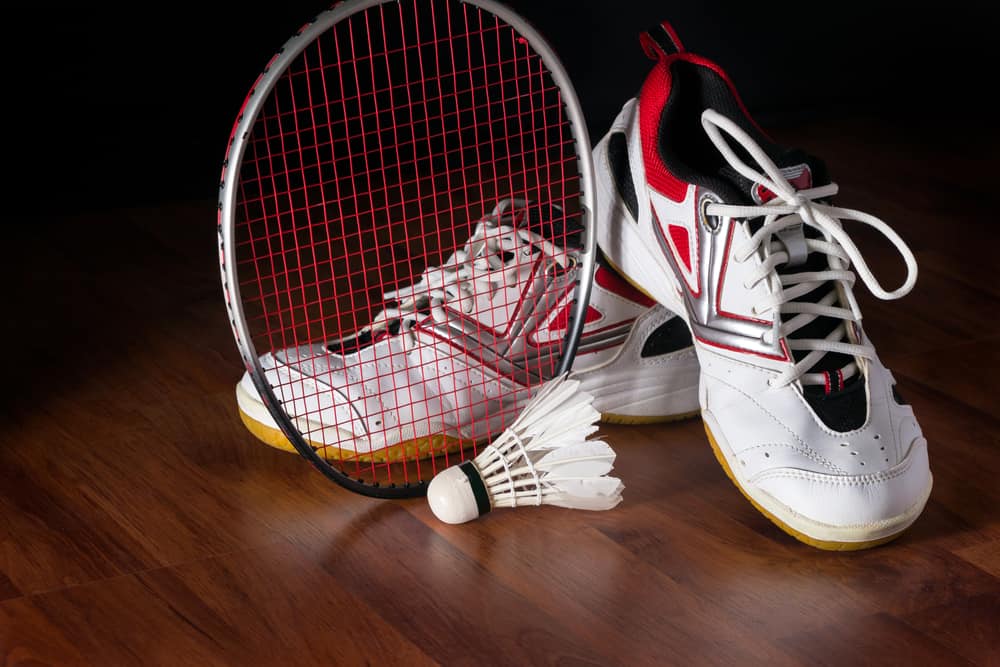Badminton shoes are designed specifically for the movement and footwork required on a badminton court. Gum rubber soles for traction, extra cushioning for lateral support, and thinner soles for explosive movements are a few of the features of badminton shoes. However, can you use badminton shoes for running?
You can’t use badminton shoes for running, as these shoes are designed for indoor use only and have thinner soles for faster movements. Outdoor use will damage the thin rubber sole, resulting in the badminton shoe wearing down faster than normal.
In this article, I will focus on the characteristics of badminton shoes in comparison to running shoes and whether badminton shoes can be worn for running outdoors or indoors. Keep reading to learn more.
New to Badminton? Check out the 3 most important rules to badminton serving.
The Beginner Badminton Racquet I Recommend
Can Badminton Shoes Be Used for Outdoor Running?
Badminton shoes, if used outdoors, can be damaged very easily. The exterior sole of the shoe is soft because it was manufactured for indoor purposes only. Badminton is typically played on wooden, synthetic, or rubber floors.
Outside surfaces, for example, soil, gravel, concrete, or asphalt, are too hard for a badminton shoe and will cause the sole to deteriorate at a faster rate than it normally would. This will result in the shoes suffering from wear and tear very quickly.
Related: Experts say court shoes should be changed about every 6 months. But do you know how often badminton strings break on your racquet?
Can Badminton Shoes Be Used for Indoor Running?
If running for short distances or a short period, like less than 15 minutes, badminton shoes can be worn for indoor running. However, the running track must be made of the same or similar material as a badminton court.

Badminton Shoes and Running Shoes Compared
| Features | Badmtinont Shoes | Running Shoes |
| Soles | Thinner for explosiveness | Thicker for shock absorbency |
| Material of Sole | Gum Rubber | Rubber |
| Flexibility | Required | Minimal |
| Cushion | Required for side-to-side movement | Required for minimal impact |
| Center of Gravity | Lower | Adequet |
| Weight | Light | Lighter |
| Fit | Tight | Snug but not tight |
In general, badminton shoes should not be worn for running, nor should running shoes be worn to play badminton. The reasons for this will be highlighted below with a comparison between the two types of shoes.
Badminton Shoes
Badminton shoes are commonly manufactured using leather or synthetic material for the upper section of the shoe. Cushioning material and non-marking gum rubber are used for the interior sides and sole of the shoe, respectively. Each section of a badminton shoe works in tandem with the next to support the player’s movements.
Shoe Sole Thickness
The sole of badminton shoes is very thin, both the interior and the exterior. Thin soles allow the player to be faster with their movements and provide more stability, as they will be feeling more of the ground.
Shoe Sole Material
Badminton shoes are made of gum rubber. This type of rubber is thinner, softer, and has more flexibility. It is typically yellow or light orange. Gum rubber is used to provide better traction on the badminton court and make movements easier.
Cushioning
Badminton players require additional cushioning on the sides of the shoes for extra support when maneuvering from side to side. Extra cushioning is also provided at the toes to help with the sudden movement of pushing against the front of the shoe.
Flexibility
Badminton shoes have great flexibility because the player must make a lot of quick movements and changes in direction, which include sidesteps, jumping, and lunges. For this reason, the shoe must be able to contour around the foot of the player regardless of the position it might be in.
Fit
Extra room within your shoe, where your foot can move around, is not good for badminton shoes. When your foot moves around in the shoe, it causes friction that can lead to blisters. Once you are 100 percent sure that you have purchased the correct size shoe, even if it feels a bit tight, break it in.
Center of Gravity
The heels of badminton shoes are typically flat, so there is no heel. The sole of the shoe is flat, ensuring that the player has a lower center of gravity to enhance their balance and provide stability.

Running Shoes
Shoes made for running or jogging are manufactured for heel-to-toe movement. Running is a consistent forward motion, and this is exactly what the shoe is designed for. The additional cushioning and support give rise to the higher heel drop.
Shoe Sole Thickness
The sole of running shoes is thicker so that the runner does not feel much of the ground beneath them. A built-up sole is designed to provide additional stability. A thicker sole reduces the pain in the feet when running for prolonged periods.
Shoe Sole Material
Running shoes are made of regular rubber, which has more durability than badminton shoes. The reason for this is that the shoes are typically for outdoor wear and running for extended periods.
Cushioning
Runners require additional cushioning both at the point of the heel and the forefoot, as runners impact the ground with more force.
Flexibility
Running shoes are not required to be very flexible as the majority of the movement is forward and side-to-side, unlike in badminton. There is minimal change in direction at a fast pace, so flexibility does not have to be ideal.
Fit
In contrast to badminton shoes, there should be wiggle room around the foot in running shoes to provide more comfort. Although running shoes should not fit too tight, they should fit the individual very snugly.
Center of Gravity
When running, it is not a requirement to have a lower center of gravity as the movement is generally one-directional. Although you need to have balance, it is not as difficult as when moving in several directions.
Editor’s Note: My favorite running shoe is the Hoka One One. And I would never wear them to play badminton. So why would treat my badminton shoes any differently?
Can You Use Badminton Shoes for Running – My Final Thoughts
Badminton shoes were not designed for running. It would be an uncomfortable experience because of the thin sole, lack of cushioning in the correct areas, and overall design of the shoe.
Additionally, the thin sole will be severely compromised, as the traction will be reduced as well as the ability of the shoe to perform as it was designed.
However, you can use badminton shoes for running indoors for short distances or a short duration, if the surface is like a badminton court.

Welcome to TheVolleyLlama.com. My name is Keith, I’m just a lover of all sports that involve a racquet, net and a ball. I played competitive high school varsity tennis, love racquetball and my whole family plays pickleball regularly. I started this website to help give people like you the basics to learn these wonderful games.


